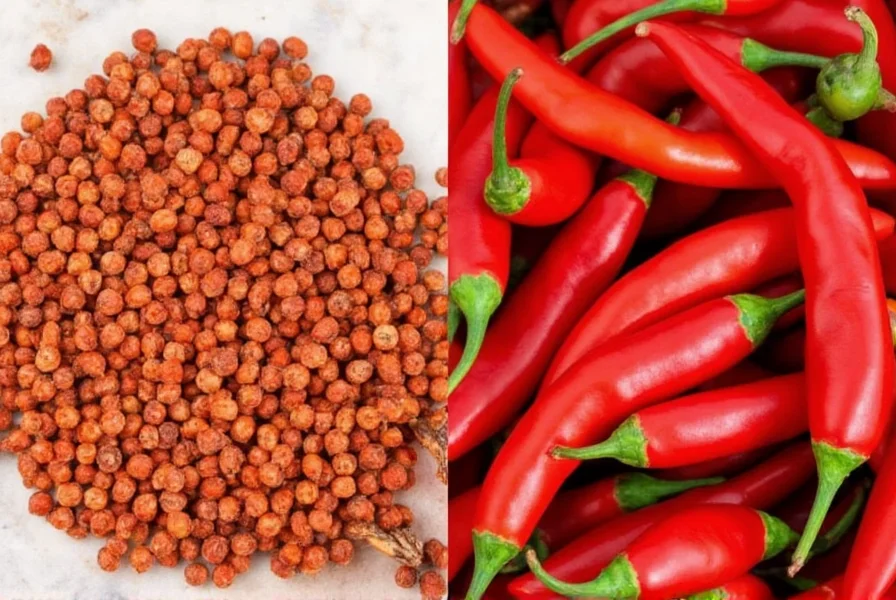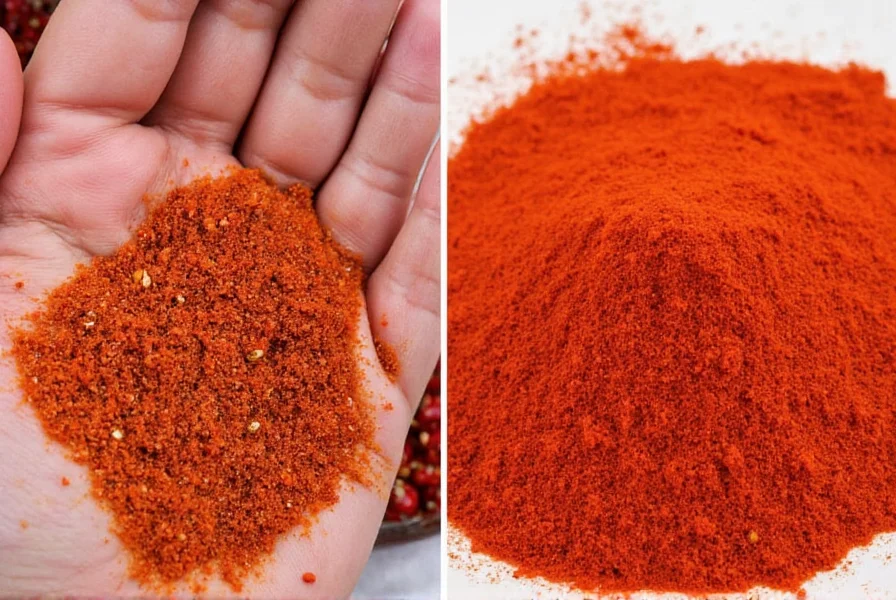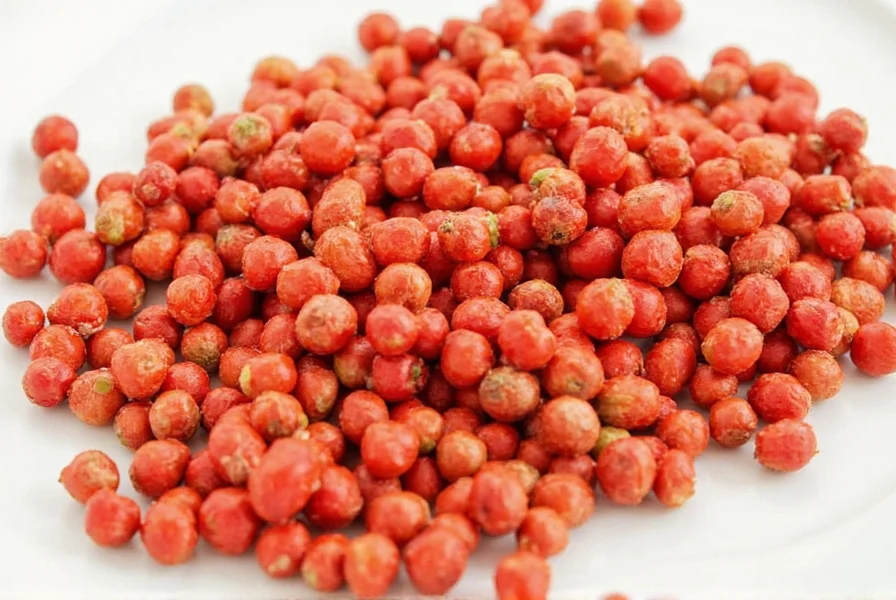Understanding the terminology around cayenne can prevent confusion in recipes and grocery shopping. Many home cooks wonder is cayenne pepper the same as cayenne chili pepper when encountering both terms on spice labels or in international recipes. The simple answer is yes—they represent the same chili variety at different processing stages.
Terminology Explained: Why Two Names for One Pepper?
The dual naming convention stems from culinary tradition and processing methods. Cayenne chili pepper specifically denotes the fresh, elongated red chili fruit still on the plant. Once harvested, dried, and ground, it becomes what we commonly call cayenne pepper. This distinction mirrors other chili varieties like jalapeño (fresh) versus jalapeño powder (processed).
Food historians trace the term “cayenne” to the French Guianese city of Cayenne, though the pepper actually originated in Central and South America. The “pepper” misnomer dates back to Christopher Columbus, who mistakenly called chili fruits “peppers” due to their pungency resembling black pepper (Piper nigrum).
Botanical Classification and Characteristics
All cayenne varieties belong to the Capsicum annuum species, which also includes bell peppers and jalapeños. The specific cultivar for cayenne typically measures 30,000–50,000 Scoville Heat Units (SHU), placing it firmly in the medium-hot category.
| Characteristic | Cayenne Chili Pepper (Fresh) | Cayenne Pepper (Ground) |
|---|---|---|
| Form | Slender, tapered fresh fruit | Finely ground powder |
| Color | Bright red when mature | Vibrant red powder |
| Shelf Life | 2-3 weeks refrigerated | 2-3 years in airtight container |
| Primary Use | Fresh cooking, salsas | Seasoning, spice blends |
Common Misconceptions Clarified
Many confuse cayenne with red pepper flakes, but they’re distinct. Red pepper flakes typically contain a blend of dried chilies (often including cayenne), while pure cayenne pepper is a single-variety ground spice. When recipes specify cayenne pepper vs cayenne chili pepper, they usually expect the powdered form unless “fresh cayenne” is specified.
Regional naming differences further complicate matters. In some European markets, “ayenne” refers to any hot red pepper, while in Caribbean cuisine, “hot pepper” often means scotch bonnet rather than cayenne. This explains why cooks searching are cayenne and cayenne chili the same might find contradictory information online.
Practical Culinary Applications
Understanding that cayenne pepper meaning and cayenne chili pepper uses are identical helps in recipe execution. The ground form dissolves evenly in liquids, making it ideal for sauces and marinades. Fresh cayenne works better in dishes where visual texture matters, like stir-fries or stuffed peppers.
When substituting between forms, remember: 1 fresh cayenne chili equals approximately 1/8 teaspoon of ground cayenne. Always start with less than you think you need—the heat builds gradually. For those exploring what is cayenne chili pepper beyond heat, it contributes a distinctive fruity undertone that enhances chocolate, citrus, and berry flavors in unexpected ways.
Storage and Quality Considerations
Maximize freshness by storing ground cayenne in an airtight container away from light and heat. Properly stored, it maintains potency for 2-3 years, though flavor degrades after 6 months. Fresh cayennes should feel firm with smooth skin—wrinkling indicates age. Never refrigerate whole dried chilies, as moisture accelerates spoilage.
When evaluating spice quality, check for consistent color (vibrant red, not brownish) and strong aroma. Lower-quality products often mix cayenne with fillers like paprika or rice flour, which affects both heat level and flavor authenticity. This is crucial information for anyone verifying is cayenne pepper the same as cayenne chili across different products.

Global Culinary Significance
Cayenne’s journey from Mesoamerican staple to global pantry essential demonstrates its versatile appeal. In West African cuisine, it’s fundamental to ground provisions and stews. Indian cooks use it sparingly in vindaloo preparations, while Cajun chefs consider it indispensable for “table pepper.” Understanding that cayenne pepper definition encompasses both fresh and dried forms helps navigate these diverse culinary traditions accurately.
Modern food science confirms what traditional cooks have known for centuries: capsaicin, the compound responsible for cayenne’s heat, offers metabolic benefits when consumed moderately. However, these health aspects remain secondary to its primary culinary role as a flavor enhancer—further evidence that whether labeled as cayenne pepper vs cayenne chili pepper, it serves the same essential kitchen purpose.

FAQ Section
Can I substitute cayenne pepper for fresh cayenne chili in recipes?
Yes, but with adjustments. Use 1/8 teaspoon ground cayenne for each fresh cayenne chili. Remember that dried spice delivers more concentrated heat, so start with half the recommended amount and adjust to taste. The fresh pepper provides texture and subtle flavor notes that ground cayenne can't replicate.
Why do some recipes specify 'cayenne chili' instead of just 'cayenne'?
This typically indicates the recipe author wants fresh peppers rather than the dried spice. In professional culinary writing, “cayenne” alone usually means the ground spice, while “cayenne chili” specifies the whole fresh pepper. This distinction helps prevent confusion about which form to use.
Is cayenne pepper hotter than red pepper flakes?
Pure cayenne pepper is generally hotter than standard red pepper flakes, which often contain milder chili varieties. Cayenne measures 30,000-50,000 SHU, while typical red pepper flakes range from 5,000-15,000 SHU. However, some specialty red pepper blends use only hot varieties and may approach cayenne's heat level.
Does the term 'cayenne' always refer to the same pepper variety?
Not always. While true cayenne comes from specific Capsicum annuum cultivars, some regions use “cayenne” as a generic term for any hot red pepper. In West Africa, it might refer to African bird's eye chilies, while in parts of Asia, it could mean当地 hot varieties. For precise identification, look for scientific names or origin details.
Can I grow cayenne peppers at home?
Absolutely. Cayenne plants thrive in warm climates with 6-8 hours of daily sunlight. Start seeds indoors 8-10 weeks before last frost, then transplant outdoors when soil reaches 70°F. The plants grow 2-3 feet tall and produce slender, tapered peppers that turn from green to bright red when mature. One plant typically yields 25-30 peppers per season.











 浙公网安备
33010002000092号
浙公网安备
33010002000092号 浙B2-20120091-4
浙B2-20120091-4